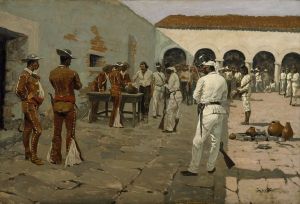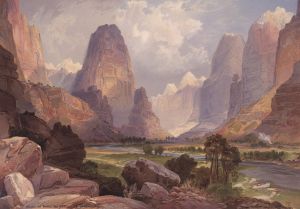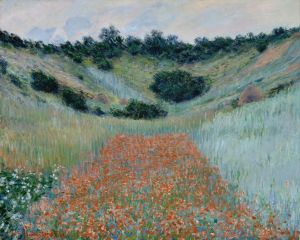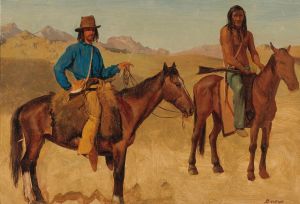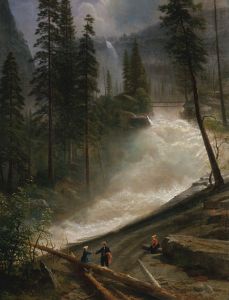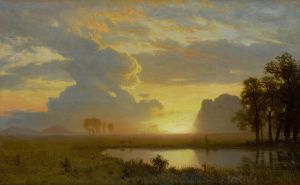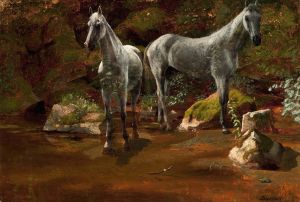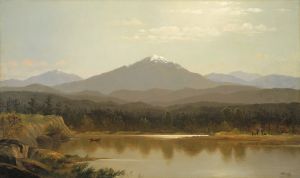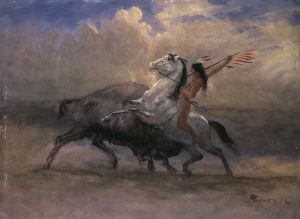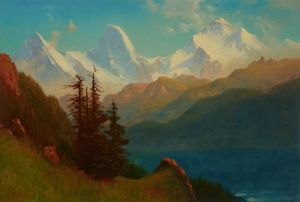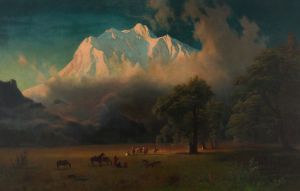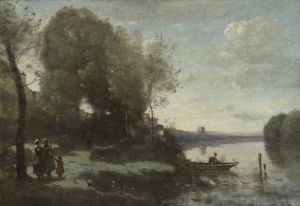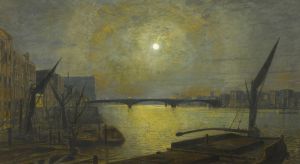
The Wolf River, Kansas
A hand-painted replica of Albert Bierstadt’s masterpiece The Wolf River, Kansas, meticulously crafted by professional artists to capture the true essence of the original. Each piece is created with museum-quality canvas and rare mineral pigments, carefully painted by experienced artists with delicate brushstrokes and rich, layered colors to perfectly recreate the texture of the original artwork. Unlike machine-printed reproductions, this hand-painted version brings the painting to life, infused with the artist’s emotions and skill in every stroke. Whether for personal collection or home decoration, it instantly elevates the artistic atmosphere of any space.
Albert Bierstadt was a renowned 19th-century American painter known for his large landscapes of the American West. His works are characterized by their grand scale, dramatic use of light, and meticulous attention to detail. Bierstadt was part of the Hudson River School, a group of artists who were inspired by the natural beauty of the American landscape.
"The Wolf River, Kansas" is one of Bierstadt's lesser-known works. Unfortunately, there is limited information available specifically about this painting. Bierstadt's oeuvre primarily focuses on the majestic landscapes of the Rocky Mountains, Yosemite Valley, and other iconic locations in the American West. However, his interest in capturing the diverse landscapes of America likely led him to paint scenes from Kansas, including the Wolf River.
The Wolf River is a tributary of the Missouri River, flowing through northeastern Kansas. The region is characterized by its rolling hills, lush vegetation, and serene waterways. While specific details about the painting "The Wolf River, Kansas" are scarce, it can be inferred that Bierstadt's depiction would have emphasized the natural beauty and tranquility of the area, consistent with his style.
Bierstadt's technique often involved the use of luminism, a style that emphasizes the effects of light on the landscape, creating a sense of depth and atmosphere. His paintings are known for their almost photographic realism, achieved through careful observation and detailed brushwork. This approach would have been applied to "The Wolf River, Kansas," capturing the subtle interplay of light and shadow on the river and surrounding landscape.
Throughout his career, Bierstadt undertook numerous expeditions to gather material for his paintings. He traveled extensively across the United States, often joining government surveys and expeditions. These journeys provided him with firsthand experiences of the landscapes he would later depict in his studio. While it is not documented whether Bierstadt visited the Wolf River specifically, his travels through Kansas and other parts of the Midwest would have exposed him to similar environments.
Bierstadt's work played a significant role in shaping the perception of the American West during the 19th century. His paintings were exhibited widely and were instrumental in promoting the idea of the West as a land of untamed beauty and opportunity. While "The Wolf River, Kansas" may not be as famous as some of his other works, it contributes to the broader narrative of his artistic exploration of America's diverse landscapes.
In summary, while specific information about "The Wolf River, Kansas" by Albert Bierstadt is limited, the painting likely reflects his signature style of capturing the natural beauty of the American landscape. Through his detailed and luminous depictions, Bierstadt's work continues to be celebrated for its contribution to American art and its portrayal of the country's scenic grandeur.





